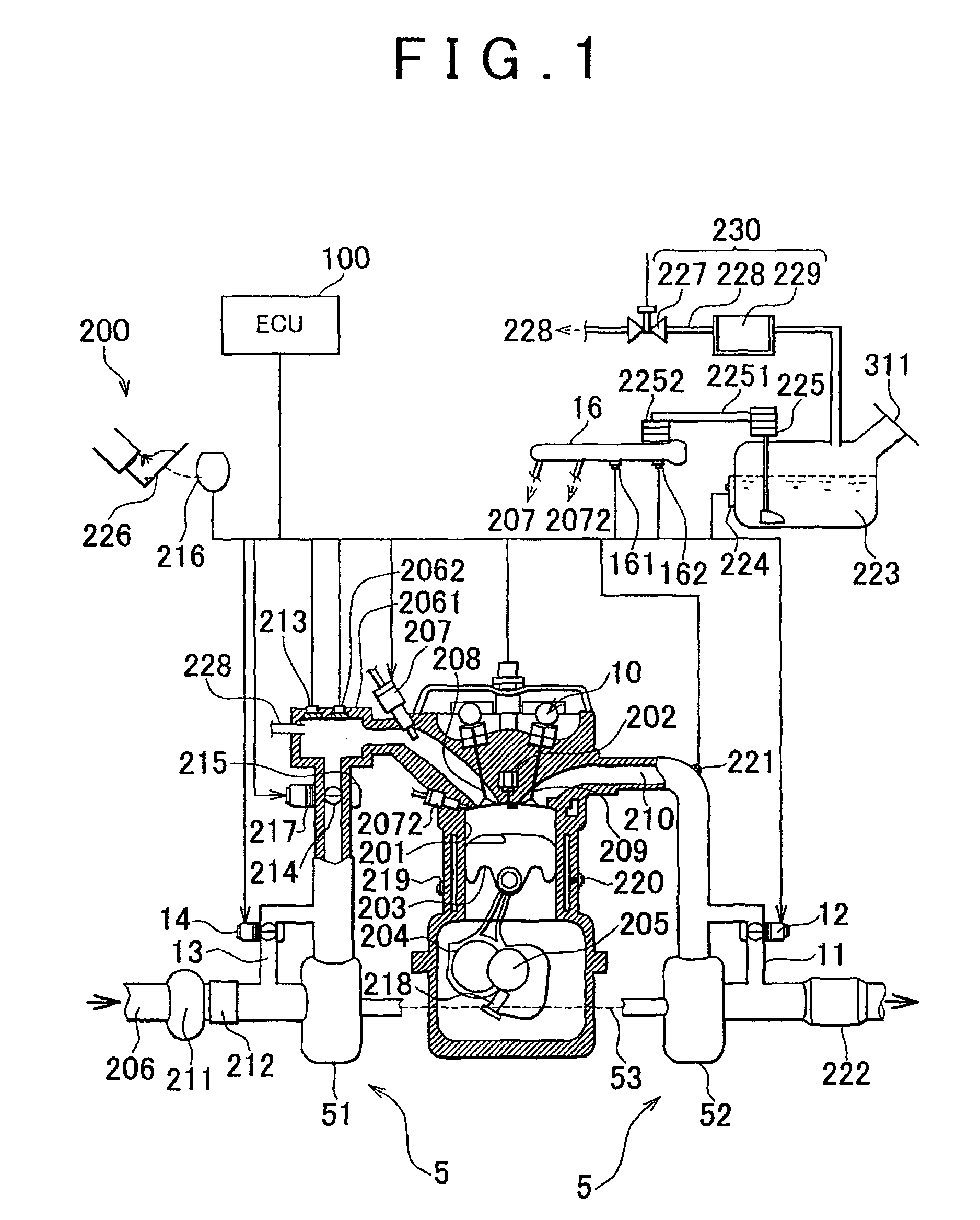Control device and control method for internal combustion engine
a control device and control method technology, applied in the direction of electric control, braking system, instruments, etc., can solve the problems of deteriorating driveability, foregoing technology, deteriorating driveability or deteriorating combustion, etc., and achieve the effect of reducing output and gaining practicability
- Summary
- Abstract
- Description
- Claims
- Application Information
AI Technical Summary
Benefits of technology
Problems solved by technology
Method used
Image
Examples
first embodiment
[0061](1) A construction and an operation process of a control device for an internal combustion engine in accordance with first embodiment will be described with reference to FIGS. 1 to 7. According to this embodiment, the driveability can be suitably secured even in the case where a blended fuel is used, as described in detail below. In particular, since the amount of intake air is appropriately restricted in accordance with the fuel property (in this case, the alcohol concentration), an event of the fuel injection amount becoming insufficient relative to the intake air amount is avoided. In consequence, it becomes possible to avoid a lean misfire, knocking, or a rise in the exhaust gas temperature, and also avoid a damage to the engine, etc.
[0062](1-1) Construction
[0063]Firstly, a basic construction of a control device for an internal combustion engine in accordance with the embodiment will be described with reference to FIG. 1. FIG. 1 is a schematic sectional view of an engine e...
second embodiment
[0108](2) Second Embodiment
[0109]Operation process of a control device for an internal combustion engine in accordance with a second embodiment will be described with reference to FIGS. 8 and 9 as well as FIGS. 1 to 7. FIG. 8 is a flowchart showing an output correction process in accordance with the second embodiment. FIG. 9 is a characteristic diagram showing a relationship between the target fuel pressure and the limit injection amount. Incidentally, since a basic construction of the second embodiment may be substantially the same as shown in FIG. 1 and the basic operation other than the output correction process may be substantially the same as shown in FIG. 5, the same constructions and steps are assigned with the same reference characters, and detailed descriptions thereof are appropriately omitted.
[0110]According to the second embodiment, even when the intake air amount is restricted as shown in conjunction with the first embodiment, the decline in output can be suitably avoid...
third embodiment
[0115](3) Third Embodiment
[0116]Next, operation processes of a control device for an internal combustion engine in accordance with a third embodiment will be described with reference to FIG. 10 as well as FIGS. 1 to 7. FIG. 10 is a flowchart showing an output correction process in accordance with the third embodiment. Incidentally, since a basic construction of the third embodiment may be substantially the same as shown in FIG. 1 and the basic operation other than the output correction process may be substantially the same as shown in FIG. 5, the same constructions and steps are assigned with the same reference characters, and detailed descriptions thereof are appropriately omitted.
[0117]According to the third embodiment, even in the case where a blended fuel is used, it is possible to suitably secure the driveability. Furthermore, because the restriction of the intake air amount is performed via the waste gate valve 12 (or the air bypass valve 14) instead of the throttle valve 214 ...
PUM
 Login to View More
Login to View More Abstract
Description
Claims
Application Information
 Login to View More
Login to View More - R&D
- Intellectual Property
- Life Sciences
- Materials
- Tech Scout
- Unparalleled Data Quality
- Higher Quality Content
- 60% Fewer Hallucinations
Browse by: Latest US Patents, China's latest patents, Technical Efficacy Thesaurus, Application Domain, Technology Topic, Popular Technical Reports.
© 2025 PatSnap. All rights reserved.Legal|Privacy policy|Modern Slavery Act Transparency Statement|Sitemap|About US| Contact US: help@patsnap.com



